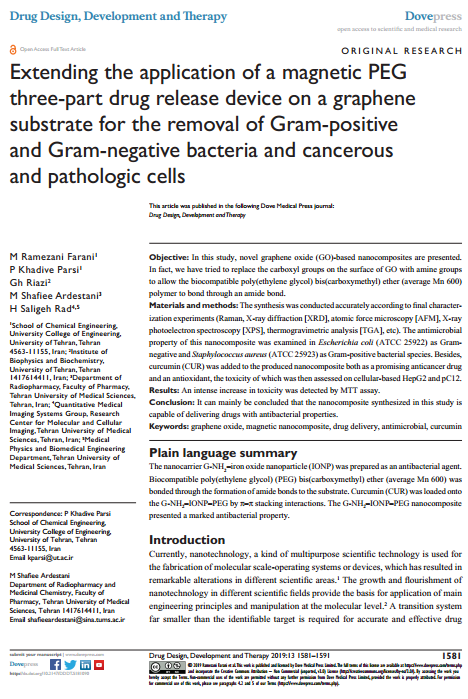Extending the application of a magnetic PEG three-part drug release device on a graphene substrate for the removal of Gram-positive and Gram-negative bacteria and cancerous and pathologic cells
Abstract
Objective:
In this study, novel graphene oxide (GO)-based nanocomposites are presented. In fact, we have tried to replace the carboxyl groups on the surface of GO with amine groups to allow the biocompatible poly(ethylene glycol) bis(carboxymethyl) ether (average Mn 600) polymer to bond through an amide bond
Materials and Methods:
The synthesis was conducted accurately according to final characterization experiments (Raman, X-ray diffraction [XRD], atomic force microscopy [AFM], X-ray photoelectron spectroscopy [XPS], thermogravimetric analysis [TGA], etc). The antimicrobial property of this nanocomposite was examined in Escherichia coli (ATCC 25922) as Gramnegative and Staphylococcus aureus (ATCC 25923) as Gram-positive bacterial species. Besides, curcumin (CUR) was added to the produced nanocomposite both as a promising anticancer drug and an antioxidant, the toxicity of which was then assessed on cellular-based HepG2 and pC12.
Results:
An intense increase in toxicity was detected by MTT assay.
Conclusion:
It can mainly be concluded that the nanocomposite synthesized in this study is capable of delivering drugs with antibacterial properties.

